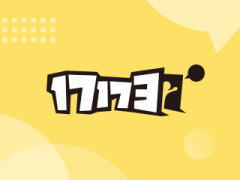战史:二战之前的捷克斯洛伐克装甲力量
17173 新闻导语
内容简介: 1918年,由于内部政治动荡,奥匈帝国解体。而捷克斯洛伐克就是在其遗迹上诞生的,此后在二战之前那段日子里,共存在了20年。
Czechoslovakia was established from the ashes of the Austro-Hungarian Empire as a result of internal political upheaval that finally led to its dissolution in 1918. During the two decades of its pre-WW2 existence, it was one of the most developed countries in the region, inheriting the majority of the former empire's industrial potential. Even before it existed as a separate entity, Czech-made Škoda artillery was world-famous so it was only logical for Czech companies to use the arms-making expertise to design and build tanks.
1918年,由于内部政治动荡,奥匈帝国解体。而捷克斯洛伐克就是在其遗迹上诞生的,此后在二战之前那段日子里,共存在了20年。由于继承了前帝国的大部分工业能力,捷克斯洛伐克曾是该地区最发达的国家之一。即使在独立之前,捷克造的斯柯达火炮也是世界闻名的,捷克的公司也必然会用他们在军火制造方面的专业知识来研制坦克。
The Beginnings
起源
The Czechoslovak army was from early on conceived as a mobile force to compensate for the lacking numbers of its larger neighbors. The most important element of its philosophy – mobility – came from the Legion experience. Czechoslovak Legions in Russia thrived on mobile warfare with infantry units supported by the firepower of armored trains and at one point practically controlled the entire Trans-Siberian Railway before being evacuated fromVladivostok and making their way back to their homeland. Old Legion officers were often appointed to positions of command.
相比国土更大的邻国,捷克斯洛伐克的兵源不足,为了弥补这一短板,捷克斯洛伐克陆军很早就开始构思组建一支机动武装力量。根据捷克斯洛伐克军团(译注:一战期间由捷克和斯洛伐克志愿兵组成的部队,站在协约国这一边)的作战经验,这一理念中最重要的一点就是于机动性。捷克斯洛伐克军团是在机动作战中成长起来的,他们用装甲列车上的火力支援步兵。在他们从海参崴撤出回到祖国之前,曾一度控制了整条跨西伯利亚铁路。旧军团的军官们也经常被任命为捷克斯洛伐克军队的指挥官。
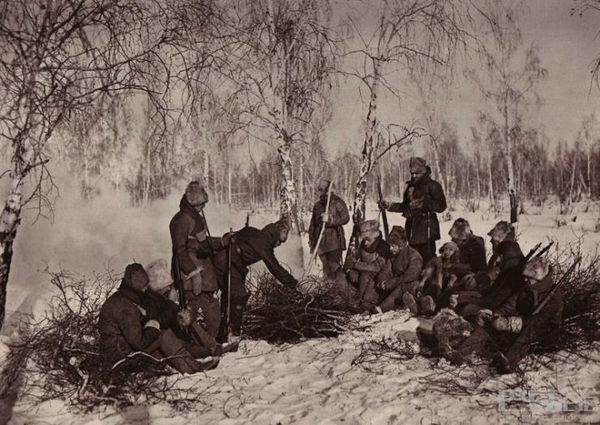
捷克斯洛伐克军团
Very early on (1918-1920), the Czechoslovak military, unlike its northern neighbor, had little in the way of armor, relying on a couple of obsolete armored trains and some very old armored cars from Italy. All the heavy equipment used by the Legions in Russia stayed behind when the troops were evacuated.
在初期(1918-1920),不像他的北方邻居,捷克斯洛伐克军队几乎没有装甲力量,只有一些老式的装甲列车和一些非常陈旧的意大利造装甲车。当初在俄国的捷克斯洛伐克军团在撤离时,把重装备都留在了当地。
The first tanks of the Czechoslovak army, as was often the case back then, were French Renault FT vehicles from surplus sales. Attempts to purchase such vehicles date back to 1919 with the first 5 tanks being purchased and delivered in 1922 and 1923 and 2 more in 1924. The 20s were quite chaotic for Czechoslovak army development with military experts unable to agree upon the correct tactical use of tanks, so these Renault FTs for many years remained the only tracked armored vehicles of the Czechoslovak military. That however does not mean there were no attempts to change the situation and to develop the first indigenous tank for mass production.
如当时常见的做法,捷克斯洛伐克陆军的第一批坦克是雷诺FT,这是法国出售的剩余物资。购买这批坦克的过程要追朔到1919年,首批购买了5辆,在1922及1923年交货,1924年又再次购进了2辆。对于捷克斯洛伐克陆军发展来说,1920年代是个非常混乱的时期,军事专家们对坦克战术的意见不一。所以在很多年内,捷克斯洛伐克军队只是把雷诺FT当成履带式装甲车来使用。但这并不意味着没有人试图改变这一状况,也不意味着没有人试图研制第一代本土的量产型坦克。
In the 20s, tracked armor development took two basic directions. One was the "usual" way – Czechoslovak designers (the Praga Design Bureau) looked at ways to improve the Renault. The result were two proposals from the 20s, known as Praga MT ("malý tank" or small tank) and Praga YNH. The Praga MT was originally an artillery tractor-converted-tank. It was a project-only vehicle that was to be armed with the same gun the FT had (37mm Puteaux). The design however turned out to be even worse than the original Renault FT (its hull was very long) and development was quickly stopped. The second Praga project that resembled the FT came as late as 1930 and although it was definitely an improvement (for example it was to be armed with the Vickers 44/60mm gun that ČKD had the production license for), it came too late and the demands for armored vehicles had moved forward. This failure, however, did not deter Praga designers from continuing their research.
在1920年代,履带式装甲车辆的研究基本上有两个方向,其中一种就是“常规”的方式。捷克斯洛伐克的设计师们(普拉加设计局)试图改进雷诺坦克。其成果是20年代的两个提案,分别是普拉加MT(“malý tank”的缩写,即小型坦克)和普拉加YNH。普拉加MT是一种用火炮牵引车改装的坦克,仅仅是个项目,设计装一门和雷诺FT同样的主炮(37mm皮托炮)。但是,设计师发现这比原本的雷诺FT还要糟糕(车体太长),其研制工作很快就终止了。普拉加的第二个项目一直要推迟到1930年才出现,类似于雷诺FT。虽然确实有改进(比如采用了ČKD公司授权生产的,维克斯44/60mm火炮),但来的实在太晚,对于装甲车辆的要求已远非昔日可比。不过,这些失败并没有阻止普拉加的设计师们继续他们的研究。
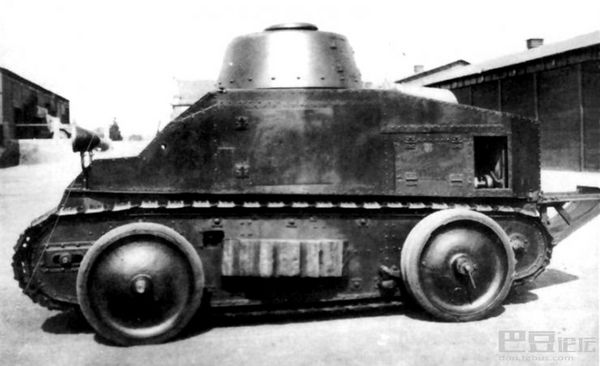
Kolohousenka装甲车
Unlike the example above, the second direction taken turned out to be a dead end – it involved wheel-cum-track suspension designs from Joseph Vollmer (a designer of First World War German tanks) who sold Praga the right to use some of his patents. The result was the "Kolohousenka" series of light armored vehicles with convertible suspension – they were rather light but the suspension was very complicated. Kolohousenka light armored vehicles were also unreliable, very top-heavy and had poor rough terrain performance. Several prototypes were built and Praga attempted to sell some abroad (to Russia for example) but without success. One prototype was assigned to a military school as a training vehicle and it stayed there until 1935. The army did not abandon the wheel-cum-track design completely until 1934 when the simplification requirements made it de facto impossible for such designs to fit in with army criteria.
和上面说的不同,第二个方向最终被证明是条死胡同。约瑟夫·沃尔默(一位一战德国坦克的设计师)设计了一种轮履两用悬挂,并将专利授权卖给了普拉加公司。其产物就是使用这种可变悬挂的“Kolohousenka”(译注:直译为轮履)系列轻型装甲车,这些车辆都相当轻,但悬挂系统非常复杂。Kolohousenka轻型装甲车极度不可靠,非常臃肿,越野性能很差。普拉加公司制造了数辆原型车,向国外推销(比如俄国),但没有成功。有一辆原型车分配给了军校,用于训练,,一直保留至1935年。但陆军一直没有彻底放弃轮履两用的设计,直到1934年,军方简化了他们的要求,而这样的设计已经不可能再符合军方的标准了。
It's worth noting that the entire 30s were marked by competition between Praga and Škoda, both renowned companies and both with their successes. Praga built the first truly mass-produced Czechoslovak light tank, the LT Vz.34 and the best light tank in the world of the early war period, the LT Vz.38 (known in German service as Panzer 38 (t)) while Škoda built the mainstay of the Czechoslovak armored might, the Š-IIa, also known as LT Vz.35 (or – in German service – Panzer 35 (t)). It is not really possible to say which company "won" in the end – during the war, both companies worked for the Germans and after the war they actually cooperated on certain tank programs until the 50s – after 1948, however, the Czechoslovak economy moved to Soviet-style central planning and the "competition" effectively ended.
在整个1930年代,除了普拉加和斯柯达之间的竞争之外,就没有什么值得注意的了。这两家公司都是知名企业,都有各自成功的产品。普拉加生产的LT Vz.34,是捷克斯洛伐克第一种真正意义上量产化的轻型坦克;他们生产的LT Vz.38是二战早期世界上最好的轻坦(德国人称之为38(t)坦克)。而斯柯达生产的Š-IIa坦克则是捷克斯洛伐克装甲力量的核心,这种坦克也叫LT Vz.35(德国人称之为35(t)坦克)。很难说哪家公司笑到了最后,在战时,这两家都为德国人工作。在战后,在1950年代之前,实际上在某些坦克项目上他们还有合作。而在1948年以后,捷克斯洛伐克的经济转向苏联模式的计划经济,“竞争”实际上也就不存在了。
The Thirties
1930年代
Czechoslovakia entered the 30s with ever increasing weapons production (in the early years of the decade, Czechoslovakia was actually the biggest arms exporter in the world for a year or two). Unfortunately, the next "trend" in armor turned out to be about as successful as the last one – this time it was the tankette.
进入1930年代,捷克斯洛伐克的军火产量不断提高(在这10年的早期,有1或2年,捷克斯洛伐克实际上是世界上最大的军火出口国)。但不幸的是,装甲车辆发展的下一个“风潮”如上述轮履两用车辆一样失败,这是个超轻型坦克的时代。
Tankettes are very small armored vehicles, usually for 2 soldiers. Perhaps the best known are the British (Carden-Loyd) and French tankettes but the Czechoslovak military, seeing the popularity of these vehicles abroad, could not stay behind and so the infamous Tančík Vz.33 (1933 pattern tankette) was born. It was based on a Carden Loyd design and it was possibly the worst armored vehicle to ever see service in the Czechoslovak army. It had practically no armor, it was slow, had poor all-terrain capabilities and most of all it was unreliable. Its only good quality was that it was cheap (which was the main argument in their favor). The soldiers hated these vehicles with a passion and their fears were confirmed when these tankettes were deployed against Nazi terrorists in the Czechoslovak borderlands in 1938 with very poor results. Despite all these issues, more than 70 were built. They were used mainly for training and after the German occupation of Czechoslovakia they were all most likely scrapped.
超轻型坦克是一种非常小的装甲车辆,通常只有两名乘员。或许最著名的是英国(卡登-洛依德)和法国的超轻型坦克。但捷克斯洛伐克军队看着这种车辆在国外的流行,也不甘人后,臭名昭著的Tančík Vz.33(1933年型超轻型坦克)就此诞生。该型坦克基于卡登-洛依德超轻型坦克进行设计,可能是捷克斯洛伐克陆军用过的装甲最差的装甲车辆了。实际上,这车就没有装甲,车速又慢,越野性能糟糕,大多数也很不可靠。唯一的优点就在于便宜(赢得订单的主要因素)。士兵们对此深恶痛绝。他们的担忧在1938年,在捷克斯洛伐克边境和纳粹暴徒的交战中得到了证实,超轻型坦克的战绩一塌糊涂。虽然有这些问题,还是制造了超过70辆超轻型坦克,主要用于训练。在德国吞并捷克斯洛伐克之后,很可能都被报废了。
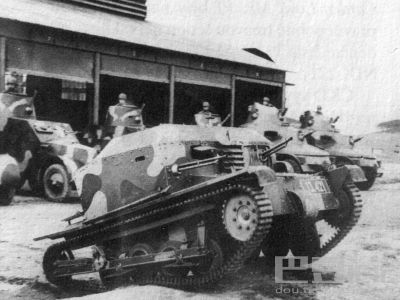
Tančík Vz.33
The rise of Nazism and the pressure in Europe in 1933 led to a complete overhaul plan for the Czechoslovak military. Earlier the tanks were only considered – as in many other countries – to be infantry support weapons, but the 1934 army development plan brought big changes by splitting future Czechoslovak armor development into three categories:
随着纳粹主义的崛起和给欧洲带来的压力,在1933年,捷克斯洛伐克陆军启动了一项大调整计划。早先,和很多其他国家一样,坦克仅仅被认为是一种步兵支援武器。但在1934年,对陆军发展计划做了重大修改,将未来捷克斯洛伐克的装甲力量发展分为三个大类:
Category I – tankettes
Category II – light tanks (later to be split into IIa – cavalry light tanks, IIb – infantry light tanks and IIc – medium tanks)
Category III – infantry assault vehicles (breakthrough tanks)
- I类:超轻型坦克
- II类:轻型坦克(后来又拆分成IIa类,轻型骑兵坦克;IIb类,轻型步兵坦克和IIc类,中型坦克)
- III类:步兵突击战车(突破坦克)
Category I mostly ended with the P-I (factory designation of the Tančík Vz.33) although there were other competing prototypes by Škoda (the MU series).
尽管斯柯达还有些与普拉基竞争的原型车(MU系列),但I类坦克基本上在P-I坦克(Tančík Vz.33的工厂设计代号)之后就不再发展了。
Category II was far more interesting. The first mass-produced tank of this category was the Praga P-II, developed between 1931 and 1932. It was a classic concept light tank, it had (for its time) sufficient armor (15mm) and the excellent 37mm Škoda A3 gun. It did win the army contract over its competitor from Škoda (Š-II, also known as S.U.) Soldiers liked this vehicle a lot – it was very reliable but it also had its flaws: in 1935 the protection was already insufficient and it was rather slow (32 km/h maximum speed). The decision was made, therefore, to replace it with something more modern. The remaining LT Vz.34 tanks served in various roles (usually as training vehicles) until 1939 when they fell into German hands, although by that time they were completely obsolete.
II类坦克则要有意思得多。该类坦克中,第一种量产型是普拉加于1931-1932年间研发的P-II坦克。该型坦克(在当时)有着足够的装甲防护(15mm),以及极好的37mm斯柯达A3炮。它在和斯柯达(Š-II坦克,也叫S.U坦克)的竞争中胜出,赢得了军方订单。士兵们非常喜欢这辆车,它非常可靠。但也有其缺陷:在1935年,其装甲防护已经不够,而且它的速度相当慢(最高时速32 km/h)。因此,决定用某种更现代化的型号来代替它。剩余的LT Vz.34被用于多种用途(通常用于训练),直到1939年落入德国人之手,不过在那时已经完全过时了。
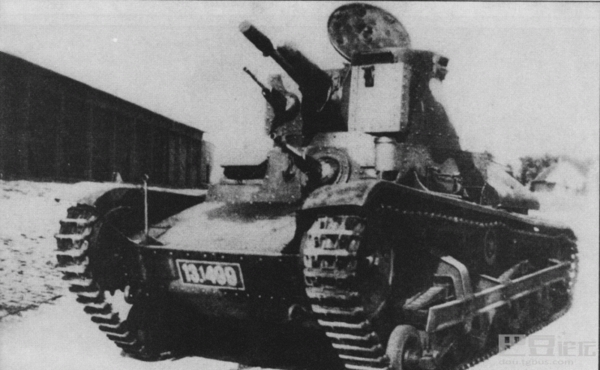
LT Vz.34
The replacement for the LT Vz.34 belonged to the IIa category. Just like before, two competing designs were made – the Škoda Š-IIa and the Praga P-IIa. Both were on par but at this point Škoda had a lot of political power and it was this power that helped the company tip the scales in its favor. In any case, it was a good choice. For its time (1935), the vehicle was simply excellent. It had a good blend of armor, firepower and reliability and it was accepted into Czechoslovak army service as the LT Vz.35. It was not all that fast (34 km/h), but the crews liked its ease of operation and maintenance. It was also widely exported, existed in many versions and was used by multiple armies – captured Czechoslovak stocks became the Panzer 35 (t), the Romanians used it as the R-2 and the Bulgarians used a somewhat modified version called "Lek tank Škoda". In the end over 400 were made in total.
用于替换LT Vz.34的坦克属于IIa类。就在这之前,已经有了两个互相竞争的设计,分别是斯柯达Š-IIa和普拉加P-IIa。这两个方案都符合要求,但在当时,斯柯达有很多政治靠山,正是这股力量帮助斯柯达赢得了订单。但不管怎么说,这仍然是个好选择。在当时(1935年),这辆车是个卓越的设计。装甲、火力和可靠性的完美结合,以LT Vz.35的名称进入捷克斯洛伐克陆军服役。这辆车兵并不是很快(34 km/h),但操作和维护都很方便,深得乘员们的喜爱。该型坦克还大量出口,有很多不同的版本,很多国家的军队使用过。被德国人缴获后,德国人称之为35(t);罗马尼亚人称之为R-2;保加利亚人使用一种有所修改的型号,称之为“Lek tank Škoda”(译注:直译为斯柯达轻型坦克)。该型坦克最终生产了超过400辆。
Contrary to the IIa category, the IIb category never really went anywhere as both Škoda and Praga produced vehicles of insufficient quality (P-IIb and Š-IIb).
和IIa类坦克不同,IIb类坦克从未真正装备过,因为斯柯达和普拉加造出来的坦克都不符合要求(P-IIb和Š-IIb)。
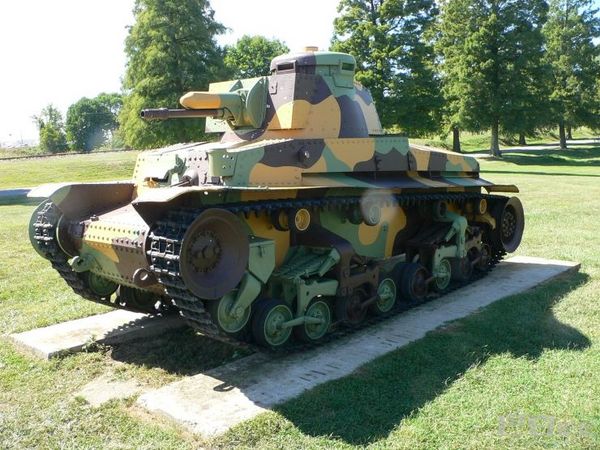
LT Vz.35
Škoda may have won the previous round but it was Praga that in the end introduced the technical marvel that was the TNH chassis. Designed by Praga engineer and inventor Alexej Surin, the TNH series of vehicles were the best light tanks of the late inter-war period. Possibly the best known variant is the LT Vz.38, which was selected as the next Czechoslovak light tank, but before it could be properly fielded, all production fell into German hands. Superior to any other light tank in service at that time, it was this vehicle the Germans used to strengthen their armored divisions for their attacks on Poland and France.
虽然斯柯达赢了第一轮,但普拉加最终创造出了一个技术奇迹,那就是TNH底盘。这是由普拉加的工程师阿列克谢·苏林设计的。TNH系列是两次世界大战之间最好的轻型坦克。最有名的型号大概要数LT Vz.38了,该型坦克被选为捷克斯洛伐克的下一代轻型坦克。但在其上场之前,所有的生产线都已落入德国人之手。由于其比当时所有其他在役的轻坦都好,德国人用它来加强他们的装甲师,用于进攻波兰和法国。
Numerous variants of the TNH tanks existed and the series was sldo widely exported toSweden (Strv m/41), Iran (TNH), Lithuania, Slovakia, Peru and other countries. While these vehicles became obsolete in 1941, despite improved variants still being produced, the suspension lived on and was used in numerous Czech-German projects. The most famous of these was the Jagdpanzer 38 (t) (incorrectly known as the "Hetzer"). After the war the TNH light tank concept was revived yet again in the TNH 57/900 and TNH based vehicles were used until the 60s.
TNH坦克有多个变种,该系列坦克大量出口到瑞典(Stev m/41)、伊朗(THN)、立陶宛、斯洛伐克、秘鲁和其他一些国家。到了1941年,该型坦克已经显得过时。不过其多种改型还继续生产,一些捷克-德国项目仍然采用其悬挂系统。最著名的就是38(t)坦克歼击车(被错误地称为“追猎者”)。在战后,TNH轻坦的概念在TNH 57/900坦克上再次复活,一些基于TNH的车辆一直被使用到1960年代。
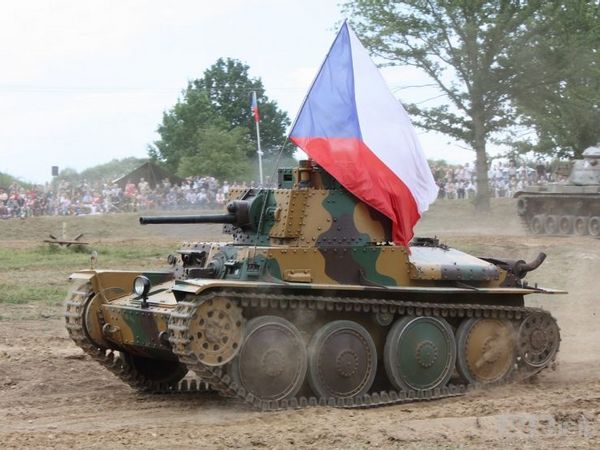
LT Vz,.38
One more topic that should be mentioned is the number of medium and "heavy" tank projects. Czechoslovakia produced two major medium tanks – the Škoda Š-IIc and the Praga V-8-H. Both were of roughly equal power and both were equipped with Škoda 47mm guns. For their time (1936-1937), they were quite advanced and sufficiently armored. Praga's model was trialed and selected to be the future medium tank of the Czechoslovak army under the designation ST Vz.39 ("medium tank 1939 pattern"). This plan, however, failed due to the occupation of Czechoslovakia and in the end the vehicle was never mass-produced. Škoda's vehicle on the other hand reached mass-production status abroad – it was sold to Hungary where it served under the designation "Turán". Original Turán tanks were modified Škoda vehicles but the Hungarians soon further developed the design independently of Škoda (which continued its own research into medium tanks during the war).
另外还要提一下的是,有一些中型坦克和“重型”坦克的项目。捷克斯洛伐克主要制造过两种中坦,分别是斯柯达Š-IIc和普拉加V-8-H。装的都是斯柯达47mm炮,火力大致相当。在当时(1936-1937),这两种坦克都非常先进,装甲防护也足够。经过测试,普拉加的型号被选为捷克斯洛伐克陆军的未来中型坦克,代号为“ST Vz.39”(1939年式中型坦克)。但是,由于捷克斯洛伐克被吞并,这个项目失败了,最终没有进入量产。而另一方面,斯柯达的型号在国外进入了量产。它被卖给了匈牙利,被命名为“图兰”坦克,进入军队服役。最初的图兰坦克是斯柯达的改进型号,但匈牙利人很快就甩开了斯柯达(在战时,斯柯达一直在搞自己的中坦研究),自己做了进一步的研发。
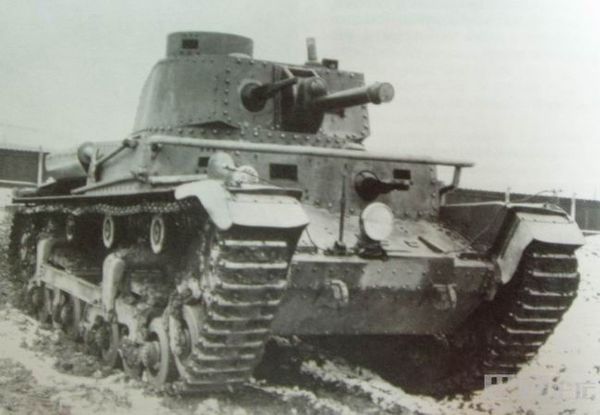
ST Vz.39
Unlike the successful light and medium tanks, the "heavy" tanks were a complete disaster. Two projects reached prototype stage (Š-III by Škoda and T-III by Tatra, a company with lots of armored car experience but no tank design experience whatsoever) and both were terrible – too heavy, very unreliable, underpowered, under-armored and extremely fuel-hungry. These prototypes were tested by the Czechoslovak military, which hated them and later on by the Germans, who considered them useless. They were probably scrapped during the war.
虽然轻坦及中坦如此成功,但“重坦”项目完全就是场灾难。有两个项目进入了原型阶段(斯柯达Š-III和太脱拉T-III,太脱拉公司有大量的装甲车设计经验,但没有坦克设计经验)。这两辆车都极其糟糕,太重、非常不可靠、火力不足、装甲防护不足,极其耗油。捷克斯洛伐克军方对这两辆原型车做了测试,非常不满。后来德国人也是抱同样看法,认为完全无用。这两个计划可能在战时就被废弃了。
Wartime and post-war Czechoslovak armor development will be described in the second part of this serie
在本文的第二部分中,将继续讲述捷克斯洛伐克战时和战后的装甲力量发展。
关于新版本,捷克的新闻
- (2025-10-28) 一度俯角一片天,五点五度当神仙!WZ120终于迎来翻身时刻
- (2025-10-27) 新版本各项属性全面加强!2.0版本的T-10值不值得保留?
- (2025-04-28) 无数车长的爱车加强了!新版本的它将再次证明自己
- (2025-04-17) 从"蛰伏者"到"进攻者":新版本268工程重获新生
- (2025-03-13) 新版本新车全揭秘,您最期待哪一位?




